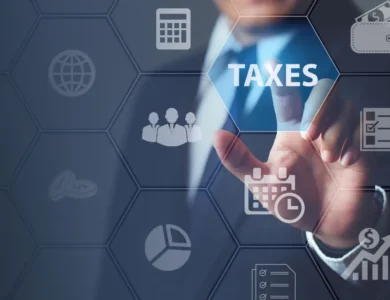How To Organize Your Financial Records For Tax Time

Preparing your financial records for tax time can be overwhelming. In fact, it might feel like you’re standing at the base of a mountain. But with the right approach, you can tackle it step by step. You need a clear process to sort through receipts, statements, and documents. Start by gathering all your financial paperwork, including income statements and deductible expenses. Use folders or digital tools to categorize them. Consider reaching out to tax services in San Jose, CA, if you need expert help. They can guide you through the requirements and ensure you don’t miss anything important. Remember, organized records reduce stress and save time when filing taxes. By taking action now, you set yourself up for success during tax season. Keep your records updated regularly, and you’ll find the process much more manageable in the long run. With preparation, you can face tax time with confidence.
Step 1: Gather All Necessary Documents
First, you must collect every piece of financial information you own. This includes W-2s, 1099s, bank statements, and receipts. These documents show your earnings and expenses. You might also need investment information and records of charitable contributions.
Step 2: Categorize Your Documents
Once gathered, sort them into categories. Consider sections like income, deductions, and investments. You can use physical folders or digital tools to help with this. For digital organization, apps or software can keep things neat. According to the IRS guidelines, maintaining organized records is crucial.
Step 3: Create a Filing System
Design an easy-to-navigate filing system. Label folders clearly so you can find what you need quickly. Use simple labels like “Income,” “Expenses,” and “Deductions.” Maintaining this system throughout the year makes future tax preparations smoother.
Step 4: Use Technology Wisely
Incorporate technology to simplify your tax preparation. Scanning documents saves space and provides easy access. Consider using apps or software to track income and expenses. These tools can help you stay organized and reduce paper use.
Comparison Table: Physical vs. Digital Organization
| Aspect | Physical Organization | Digital Organization |
|---|---|---|
| Space Needed | Requires physical storage | Minimal space needed |
| Accessibility | Access limited to location | Access from anywhere |
| Security | Risk of damage or loss | Backup options available |
Step 5: Regular Updates
Consistently update your records. Set a schedule to review documents monthly. This habit ensures you stay on top of changes and minimizes last-minute stress. Regular updates mean your records reflect your current financial situation.
Step 6: Seek Expert Help
If the process feels daunting, seek expert help. Consider professional tax services for guidance. Experts can offer advice on maximizing deductions and minimizing errors. The IRS advice on choosing a tax professional can help you find qualified assistance.
Conclusion: Simplify with Preparation
Organizing financial records for tax time doesn’t need to be difficult. Following these steps helps you manage your finances efficiently. With preparation and the right system, tax time becomes manageable. Remember to gather, categorize, and update regularly. Use technology and consider expert advice when needed. These actions not only simplify tax season but also give you peace of mind. Stay prepared, and face tax time with renewed confidence.



